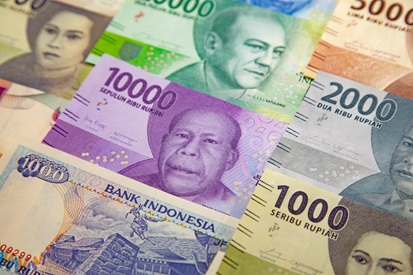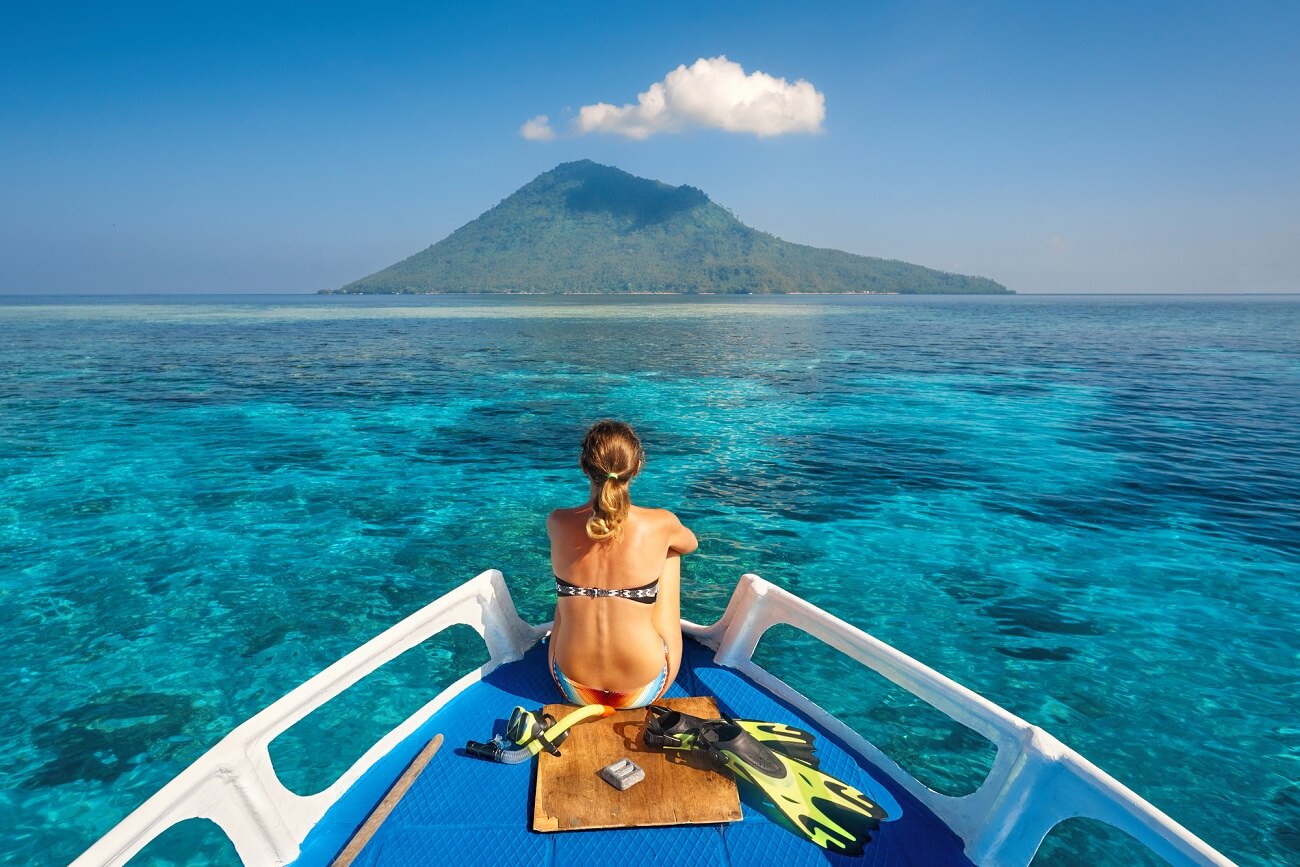

Most guests who come to Indonesia first arrive in Bali, and then discover that there are many more islands of interest to the tourist around. What can Java offer? It is still one of the most secret places, yet not overcrowded with tourists. Java is still a predominantly agricultural island, dotted with volcanoes, good beaches and surf spots.

Depositphotos
Java is the most populous and most developed island in the Indonesian archipelago. This is where the capital of Indonesia, Jakarta, is located. Despite the fact that the island of Java accounts for only 7% of the total area of Indonesia, it is home to approximately 56.7% of the country's population. It is the fourth largest island in the Indonesian archipelago and the 12th largest island in the world. Java is home to more people than any other island in the world. Its population is diverse, multilingual and increasingly urbanized. Today, it is also at the centre of the Indonesian economy, producing everything from oil to automobiles. It is not surprising that most of the major cities in Indonesia are located in Java. Java is the epitome of a fast-paced society: beautiful countryside and filthy cities, tranquil rural landscapes and crazy traffic streets.
The island is divided into the provinces of West Java, East Java and Central Java.
In Java, sugar cane plantations, rubber, tea, coffee, tobacco, cocoa, cinchona, corn, cassava, peanuts, soybeans, sweet potatoes and rice make up a significant part. Oil fields can be found off the northwest coast of Java. The island also has oil refineries.
The longest rivers in the country flow on the island - Solo and Brantas , their length is 600 km.
When heading to the island, be prepared that traffic can be chaotic and theft is the most common occurrence. And in Jakarta, and in other large cities, extra care should be taken.

Depositphotos
The climate of Java
These are classic tropics with high rainfall, hot temperatures and high levels of humidity. The temperature on the island of Java does not fluctuate much, from a minimum of +23°C to a maximum of +31°C. Temperatures are highest on the north coast, and much cooler in the mountains.
The monsoon or rainy season lasts from November to March. This season is mostly rainy and gloomy. During the rainy season, the temperature on the island of Java fluctuates between +21...+33 degrees Celsius, while at the heights it is quite cool. Typical low temperature is +17…+18 degrees Celsius.
The southeast monsoon season lasts from April to October and brings occasional rains. But mostly sunny weather. The dry season is also the best time to visit Java, with roads in the hinterland open and temperatures at their most comfortable.

Depositphotos
Java Island on the map
Java Island is located in Southeast Asia, in the southwestern part of the Indonesian archipelago. To the north of the island is the Java Sea, across which lies the island of Borneo. In the south it is washed by the Indian Ocean. Christmas Island, which belongs to Australia, is located southwest of Java. Northwest of Java, across the Sunda Strait, lies the island of Sumatra. Two smaller islands, Madura and Bali, almost touch the island of Java.
Java is mainly of volcanic origin. There are at least 112 volcanoes here, of which 45 are active. Java is part of the so-called ring of fire surrounding the Pacific Ocean, therefore it is characterized by strong seismic activity.
The highest mountain on the island of Java is a volcano known as Mount Semeru, reaching a height of 3676 meters. Since the northern coast is the flattest part of Java, most of the island's population centres are located here, including Jakarta, the capital of Indonesia. The longest river in Java is the Bengawan Solo. Bengawan Solo, which translates as “captive” or “big river”, is approximately 548 km long and flows through two provinces of the island, Central Java and East Java. Java's river system is vital to the island's economy as it is used as an irrigation system for more than two-thirds of the island's cultivated area.

Depositphotos
Language of Java
Java is home to several ethnic groups. Among them are people named after the island, the Javanese, who make up 40% of the total population of Indonesia. The western side of the island is inhabited by the Sundanese, named after the Sunda Islands in southwestern Indonesia, including Java. East Java has a large population of Balinese and Madureans, who are indigenous to the neighbouring islands of Bali and Madura. More than 30% of the entire population of the country speaks Javanese, which, of course, is the language of the people of the same name. Many inhabitants of the western tip of Java speak Sudanese. The official language, Bahasa Indonesia, which is the standardized form of Malay, is spoken by 94% of the Indonesian population, although it is the primary language for only 20% of Indonesians. Indonesian is the most widely spoken language in the capital Jakarta.
In terms of religion, the vast majority of Javanese are Muslims, as are most Indonesians in general. Religions are mixed with elements of Hinduism, Buddhism and animistic traditions.

Depositphotos
History of Java
The modern settlement of Java by people dates back to 2500 BC, when agriculture was first started on the island. The earliest kingdom based in Java was the Kingdom of Mataram in the 8th century AD. Buddhism has had a strong influence in Java. However, later Hinduism began to penetrate the island. By the 16th century, Muslim kingdoms began to rise on the island.
However, in 1512 the Portuguese arrived, followed by the Spanish, after which colonization by the Dutch began. Indonesia formally became a colony of the Netherlands until the end of World War II. Indonesia declared independence in 1945, although its struggle with the Dutch continued until 1949.

Depositphotos
Tourist attractions in Java
Yogyakarta
The self-governing city of Yogyakarta is one of the main attractions of Java. The cultural and artistic capital of the island manages to preserve traditions.
Yogyakarta is the place where you can watch the performance of Wayang - kulit (shadow puppet show), listen to gamelan, visit batik shops and learn a little about traditional and modern Javanese art.

Depositphotos
Borobudur
Borobudur temple complex of the ninth century. It is the largest Buddhist temple in the world, with more than 500 Buddha statues scattered around it. It's worth arriving at dawn to see hundreds of Buddhist statues in the muted hues of the rising sun. One of the greatest Buddhist monuments in Southeast Asia stands on a hilltop surrounded by volcanoes and overlooking green fields.
Created in 800, the Buddhist stupa Borobudur is listed as a UNESCO World Heritage Site.

Depositphotos
Prambanan
Another UNESCO World Heritage Site built in the ninth century. It is the largest Hindu temple in Indonesia and one of the largest in Southeast Asia. The magnificent Hindu temple is the largest in Java and the most beautiful in Indonesia. Prambanan was built in the 9th century, perhaps to rival the splendour of Borobudur or to celebrate the return to power of a Hindu dynasty in Java. There are three main temples dedicated to the main Hindu deities: Shiva, Brahma and Vishnu. Just 3 kilometres south of the Prambanan temple is a place that offers a beautiful view of the sunset. Few places in the world can compete with its beauty.

Depositphotos
Dieng Plateau
In Central Java, the Dieng Plateau boasts Java's oldest Hindu temples, built around the eighth century. There were once over 400 temples here, but today only eight remain. Located high above sea level, this place fascinates with its beauty. In addition to stunning views of the jungle and outlying villages from the hilltop, this highland is home to a colourful lake, a hot spring and hidden ancient Hindu temples.

Depositphotos
Bandung
Known as the city of flowers and Paris in Java, it is the third largest city in Indonesia. Bandung is located 175 km from Jakarta and provides a welcome respite from the hustle and bustle of Jakarta. The majority of the population is made up of indigenous people from Sudan from West Java, who are famous for their extroverted, accommodating character and are reputed to be zealous guardians of their ancient culture.

Depositphotos
Volcanic Paradise: Bromo Mountains and Ijen Volcano
East Java has some of the most famous volcanoes. Watching the sunrise from the peak of Mount Bromo and its surrounding peaks has become a must - do for a visit. Not far away you will find the Ijen volcano crater, one of the grandest places in Indonesia. This is the only location on Earth where natural blue fire can be observed. The largest acid lake in the world is also located here.

Depositphotos
Dream beaches and island walks
The beaches in Java are not particularly attractive, and the tides can be dangerous, especially in the south. But travellers can discover white sand beaches and coral islands in nearby archipelagos such as Pulau Seribu and Karimunjawa.
Indonesia is a tropical paradise with countless exotic islands. And Karimunyava is a few islets off the coast of Central Java, where amazing coral reefs “bloom”, mangrove forests grow and amazing plants are presented. Another option for a wonderful trip is around the islands of Tabuhan, Menjangan and Ruma Apung. If you prefer white sand beaches, go to Papuma beach, and if you prefer black coasts, then Payangan beach is your choice.

Depositphotos
Waterfalls
Tumpak Sewu is perhaps the most impressive waterfall in Indonesia. To get to it, you need time (about one day), because it is not easy to make your way to the waterfall. The path to Tumpak Seva is best combined with a trip to Bromo or Madakaripura waterfalls. Along the way you will stumble upon Goa Tetes, which is a complex of caves and waterfalls stretching to the edge of the island. Another incredible sight - Kabut waterfall Pelangi hundreds of meters high. The force with which the water hits the surface of the pool is incredible. If you are there at the right time, you will be able to see the rainbow in the fog! Separately, it is worth mentioning the beautiful Kapas waterfalls. Biru and Koban Sriti.

Depositphotos
Beautiful villages
If you like bright colors, be sure to visit Yodipan Village. On one side of the bridge is the so-called "Colorful Village", and on the other - a settlement, completely painted in blue. The local students painted the villages to attract tourists and save the locals from poverty, and they certainly did a great job and succeeded in their endeavor! Another interesting village is located near Bandung and is located around the lake.

Depositphotos
Shopping in Java
Yogyakarta is the best place for shopping in Java. You can buy an incredible variety of souvenirs, arts and crafts, wood carvings, batik, textiles and clothing, handmade textiles, traditional and local jewellery, leather dolls, basketry, tortoise shell accessories, knick knacks, copper crafts and other decorative items, objects, as well as all kinds of antiques. Shopping in Bandung is also a lot of fun. Since the city is the capital of West Java, both traditional and imported goods can be found in the market.

Depositphotos
How to get to Java
Most tourists land in Jakarta, Bandung, Semarang, Surabaya, Solo and Yogyakarta. There are various airlines such as Garuda, Merpati, Lion Air, AirAsia, Singapore, Qantas, Cathay Pacific, KLM, PAL, Thai International, JAL, KAL, Air India and others. Domestic flights within Java are not that expensive. You can fly between Jakarta and Yogyakarta as well as Yogyakarta and Malango.
Indonesia has one of the most extensive ferry and passenger ship networks in the world, with regular boats plying between all the major inhabited islands. The ferry runs between Ketapang in East Java and the West Balinese port of Gilimanuk. There are many ships and ferries between Java and various ports in Sumatra. Regular ships also run between Jakarta and Singapore via the Indonesian island of Tanjung Pinang.
Trains. The easiest and cheapest way to get around Java. You can get trains from one end of the island to the other, take advantage of the night trains for longer trips.

Depositphotos
Java has it all: two of the world's greatest ancient ruins, volcanoes, important national parks, rainforests, tea and rice plantations, big cities, big waves. The scenery in most regions of Java is stunning and despite the overcrowding of the island, there are still many untouched places. Exotic vacation will leave the most vivid impressions.
More articles
- Hotels in Indonesia on the rocks: the most incredible landscapes
- The best 5-star hotels in Ubud
- Top 8 largest hotels in the Seychelles
- Bali's Top 10 Power Spots
- Joali Being the first wellness island in the Maldives
- The best hotels in Bali with villas on the rocks
- Best Bali Hotels Adults Only
- The best hotels in Bali for family holidays
- The best family hotels in Seychelles
- Java Island on your own - where to go and the main tips



